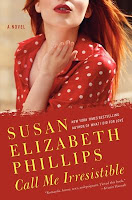
At the beginning of Call Me Irresistible, Ted Beaudine is about to be marry Lucy Korvik. Meg is one of the attendants and Lucy’s best friend, but she doesn’t believe that Lucy and Ted are meant for each other. After the wedding is called off, the shocked small town of Wynette blames Meg for the broken relationship. Throughout Call Me Irresistible, the ostracized Meg is not at the best point in her life. She is just about broke, and her credit card is maxed out. Plus, even her parents and siblings have cut her off so that she will stop living an aimless life and find responsibility and a purpose.
To be responsible, Meg must first find a job. This isn’t easy, considering no one wants to hire the girl who broke up Ted and Lucy. Eventually, she finds a couple jobs, and her fashion sense inspires her to sell jewelry on the side. Slowly Meg begins taking responsibility for herself, and the town no longer wishes to collectively ostracize her. Meg starts to like the town residents in return, including her best friend’s former fiance. As those two spend more time together, she unexpectedly falls for the irresistible Ted.
Susan Elizabeth Phillips is romance author that always makes you laugh, and Call Me Irresistible will not let you down. This book made me laugh, smile, and I even wanted to cry at some points when the town was ganging up on Meg. I could not put this book down once I started it, and this is the case for most of her books. Frequent readers of Susan Elizabeth Phillips will appreciate how she incorporates stories and characters from her other books so it’s possible to find out what is going on with your favorite characters.
Click on the cover or here to reserve a copy of the book.
Book review by Becky.





